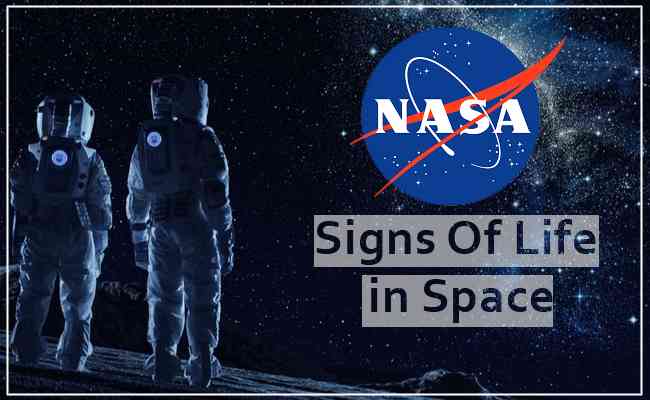Autonomous robot could help in the search for signs of life in space
By MYBRANDBOOK

A new autonomous robot developed by engineers at NASA and tested in Antarctica by a team of researchers, including an engineer from The University of Western Australia, is destined for a trip into outer space and could, in the future, search for signs of life in ocean worlds beyond Earth.
Dr Dan Arthur, from UWA’s School of Engineering teamed up with scientists from NASA’s Jet Propulsion Laboratory to trial the ‘Buoyant Rover for Under Ice Exploration’ (BRUIE) in extreme temperatures at Australia’s Casey research station in Antarctica.
BRUIE, a buoyant rover with two independent wheels, is designed to drive along the underside of ice crust and uses onboard instruments to detect compounds that are of interest to space scientists,“BRUIE, a buoyant rover with two independent wheels, is designed to drive along the underside of ice crust and uses onboard instruments to detect compounds that are of interest to space scientists,” Dr Arthur said.
“This is the third iteration of the robotic technology, which was built at NASA’s Jet Propulsion Laboratory (JPL), a division of Caltech in Pasadena, California.”
The researchers have previously conducted trials of BRUIE in the Arctic and Alaska, with the aim of assessing the robot’s suitability for a mission to outer space.
“In the future, we will be reliant on technologies like BRUIE to enable the exploration of these ocean worlds and beyond,” he said.
The team travelled to the icy continent with the Australian Antarctic Program, a Federal Government body that manages Australian stations and research activities in the region.
“We developed the project scope over a number of months and contributed to the general robotics work in the lead up to the trip,” Dr Arthur said.
The team of researchers from NASA's Jet Propulsion Laboratory, including Dr Kevin Hand, who served as Deputy Chief Scientist for Solar System Exploration at JPL, and who runs JPL's Ocean Worlds Lab, said they had greatly enjoyed working with robotics professionals from Western Australia.
“WA is a uniquely well-resourced location for the development of autonomous robotics systems that interact with geology,” Dr Arthur said.
In addition to the researchers evaluating BRUIE’s capability in outer space, the platform is being used on Earth to perform and support oceanographic research.
In the mid-2020s, NASA will launch interplanetary mission Europa Clipper, an orbiter which will orbit Jupiter and perform multiple flybys of its ocean moon Europa to capture scientific imagery and other data.
“Europa Clipper could be followed by a subsequent mission, which will aim to land on the surface of Europa and deploy an evolution of BRUIE, beginning the search for life on the icy moon,” Dr Arthur said.


Nazara and ONDC set to transform in-game monetization with ‘
Nazara Technologies has teamed up with the Open Network for Digital Comme...

Jio Platforms and NICSI to offer cloud services to government
In a collaborative initiative, the National Informatics Centre Services In...

BSNL awards ₹5,000 Cr Project to RVNL-Led Consortium
A syndicate led by Rail Vikas Nigam Limited (abbreviated as RVNL), along wi...

Pinterest tracks users without consent, alleges complaint
A recent complaint alleges that Pinterest, the popular image-sharing platf...


Icons Of India : Debjani Ghosh
Debjani Ghosh is the President of the National Association of Software...

ICONS OF INDIA : RAJESH NAMBIAR
Rajesh leads the company’s India associates and enhances relationshi...

ICONS OF INDIA : ROSHNI NADAR MALHOTRA
Roshni Nadar Malhotra is the Chairperson of HCLTech, a leading global ...


STPI - Software Technology Parks of India
STPI promotes and facilitates the growth of the IT and ITES industry i...

GSTN - Goods and Services Tax Network
GSTN provides shared IT infrastructure and service to both central and...

C-DOT - Center of Development of Telematics
India’s premier research and development center focused on telecommu...


Indian Tech Talent Excelling The Tech World - Soni Jiandani, Co-Founder- Pensando Systems
Soni Jiandani, Co-Founder of Pensando Systems, is a tech visionary ren...

Indian Tech Talent Excelling The Tech World - Vinod Dham, Founder & Executive Managing Partner, IndoUS Venture Partners
Vinod Dham, known as the “Father of the Pentium Chip,” has left an...

Indian Tech Talent Excelling The Tech World - JAY CHAUDHRY, CEO – Zscaler
Jay Chaudhry, an Indian-American technology entrepreneur, is the CEO a...